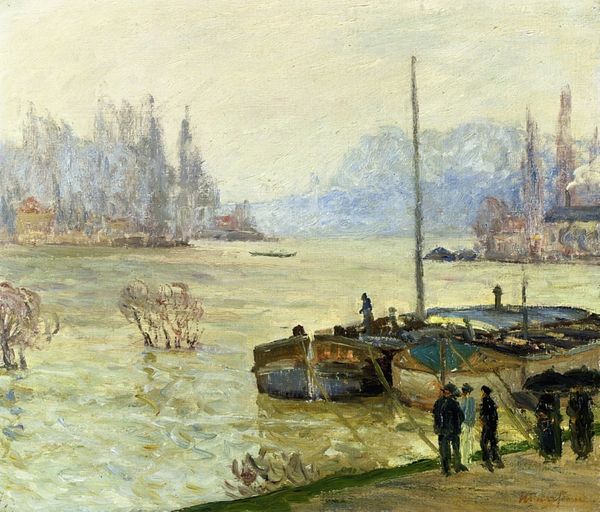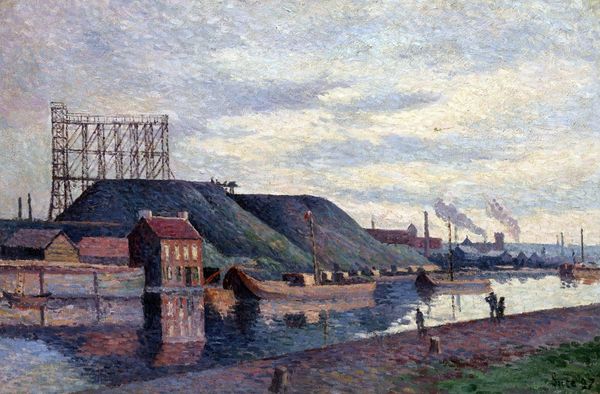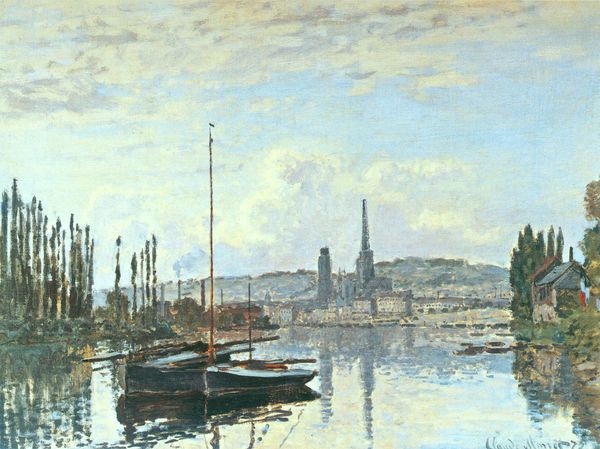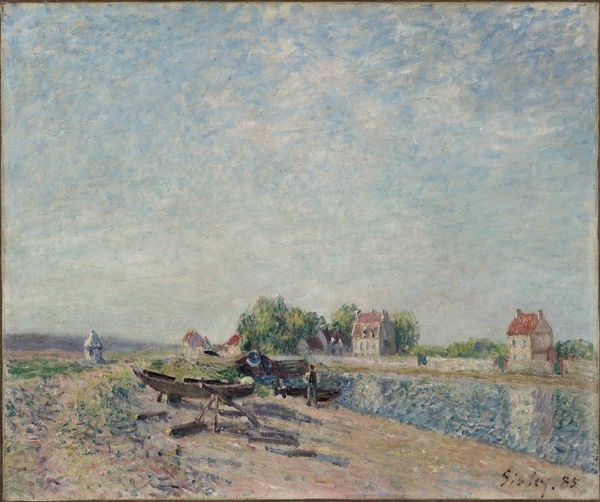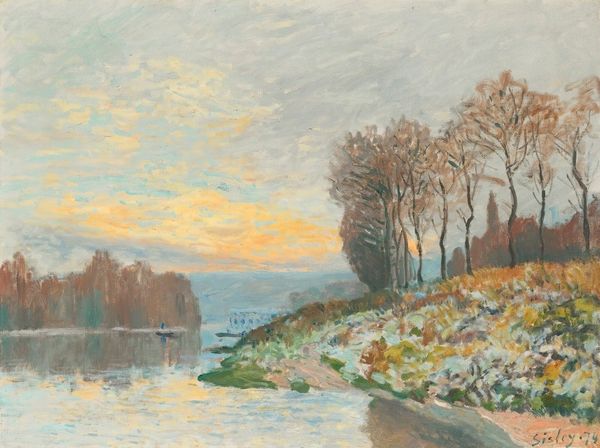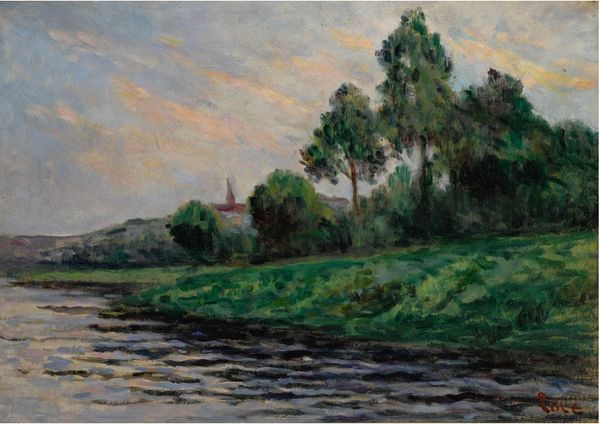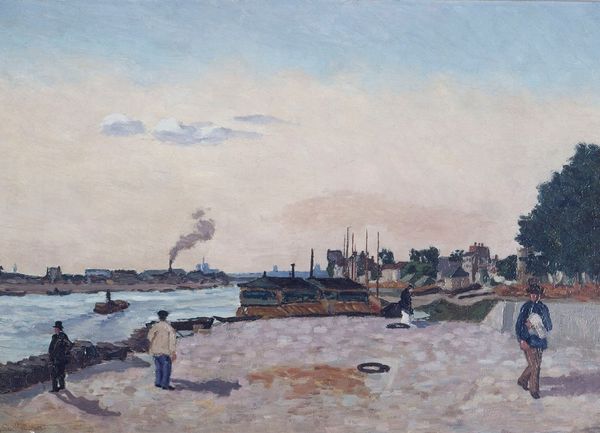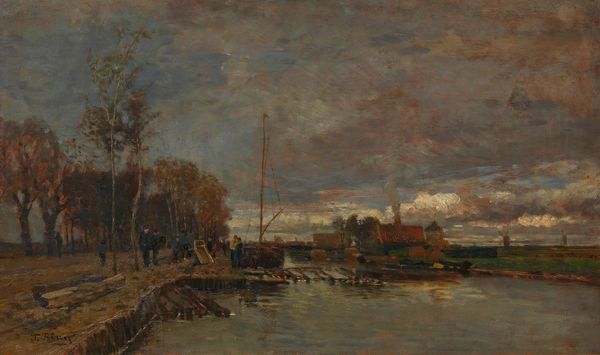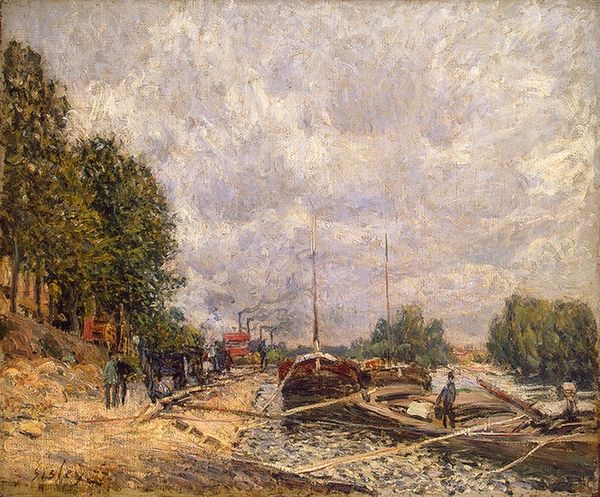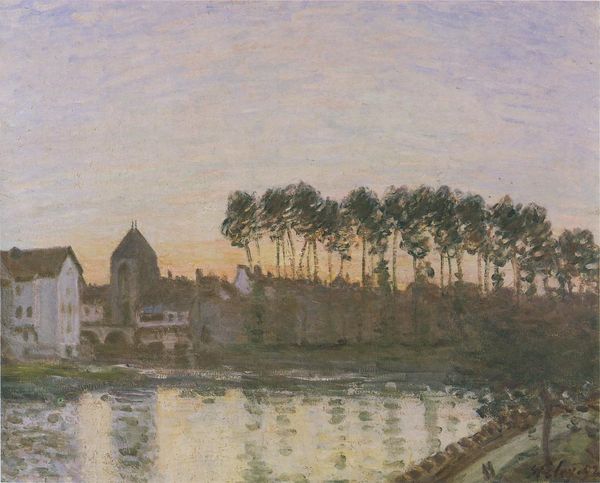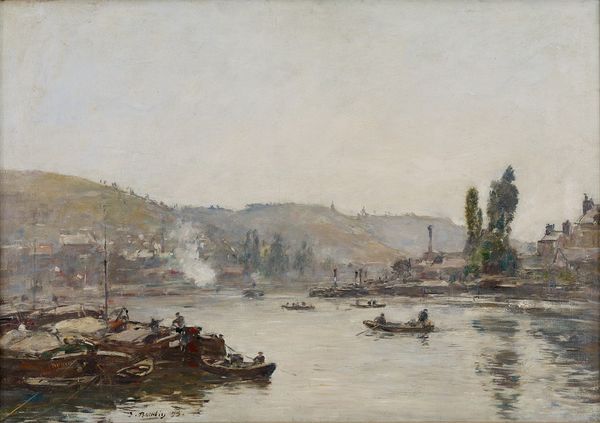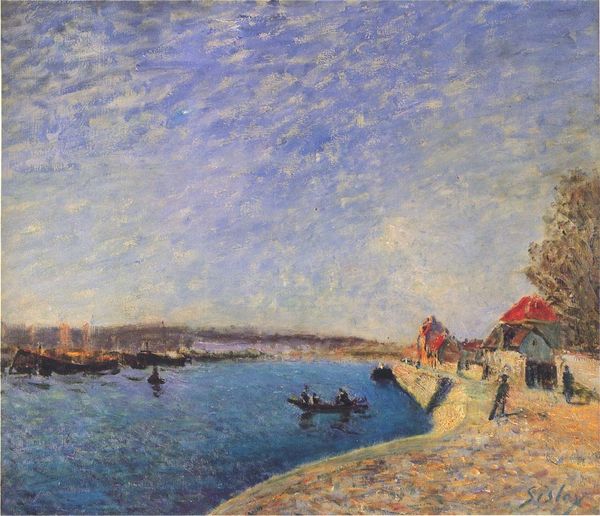
Copyright: Public domain
Curator: We have before us Maximilien Luce’s “The River Sambre at Charleroi,” executed in 1896 using oil paint. The scene is rather gray; what strikes you most about this piece? Editor: The first thing that captures my attention is the interplay of nature and industry. The composition is divided, with the natural elements—the river, trees, and hill—competing with the industrial smokestacks in the background. How would you interpret that interplay in formal terms? Curator: The tension lies primarily in the contrast of textures and forms. Consider the impasto application in the foreground, juxtaposed with the diluted washes creating the sky. Luce sets up a dialogue between these textural languages, forcing a visual push and pull between foreground and background elements. How does the muted color palette play into this? Editor: I see that the almost monochromatic scheme certainly contributes to a somber, perhaps even alienated mood. The touches of color, though, like the autumnal hues in the trees, seem deliberately placed. What would be their function? Curator: Indeed. Color here serves not to depict reality, but rather to punctuate it, creating formal rhymes. For instance, note how the color in the trees mirror the hues found in the stacked lumber to the left. These echoing chromatic signatures unite disparate parts of the canvas. Editor: That's fascinating; I had not noticed those links before. By focusing on the colors and their placement, the artwork reveals hidden meanings and dialogues between otherwise seemingly disparate objects within the image. Curator: Precisely. It reveals an interconnected visual field. Editor: So much to see! I'll definitely pay more attention to color and form relationships in future analysis. Thank you.
Comments
No comments
Be the first to comment and join the conversation on the ultimate creative platform.

